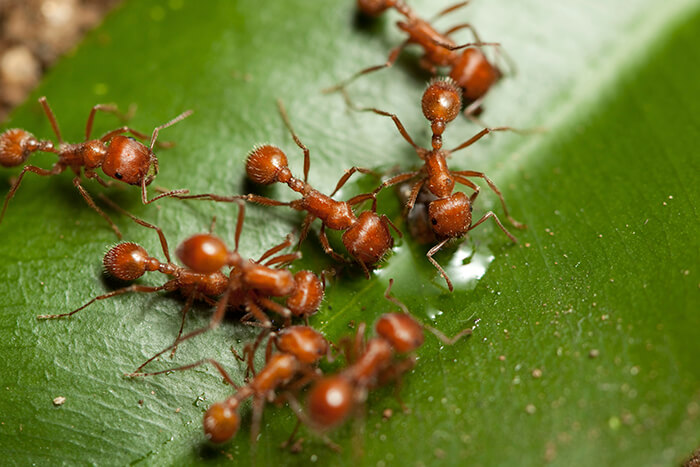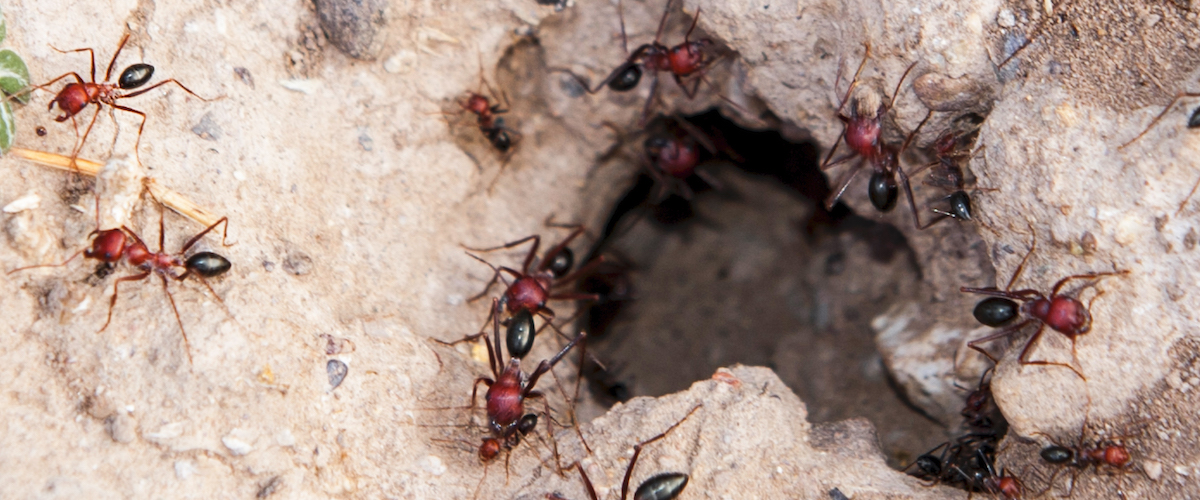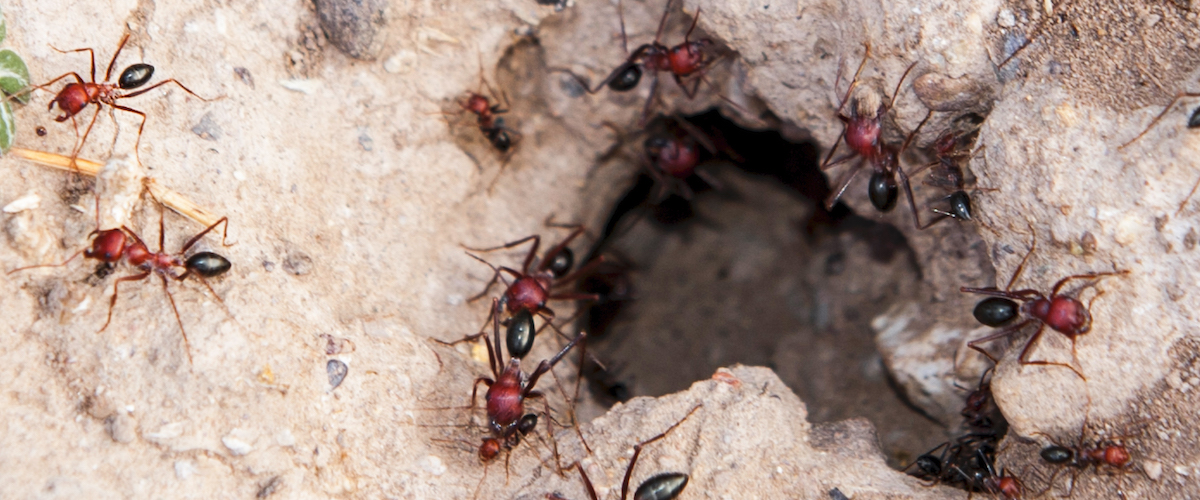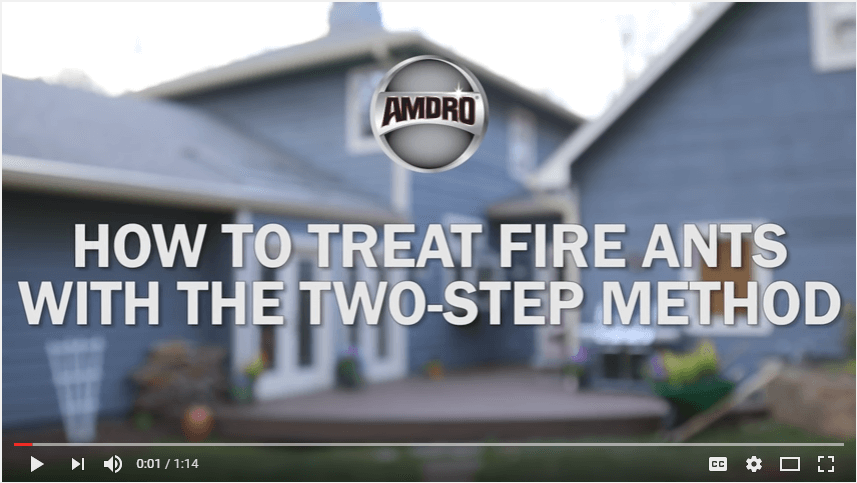Why Ant Bait is Better and How to Bait Fire Ants
Protecting your lawn from fire ants, and your family and pets from painful fire ant bites, is a battle worth fighting. When it comes to ridding your yard of these pests and their unattractive mounds, your best line of defense is a sneak attack. Win the war on fire ants with bait that aims for the heart of the ant colony.
A Fire Ant's Life
To understand why bait is your best line of defense against fire ants, it helps to learn how ants live. These insects are social creatures that form colonies in soil. It's not uncommon for a colony to consist of 100,000 to 200,000 fire ants, but colonies totaling up to 500,0001 ants are possible. If you live in the South, Southeast and Southwest, fire ants are likely to be a problem. Northern residents needn't worry; fire ants are unable to survive freezing temperatures, so they don't invade Northern regions.
Fire ants are very protective of their territories; they tend to attack as a group when they feel threatened or invaded. Their bites sting and are especially painful. Young children and pets in particular find the experience terrifying. Fire ant bites leave tender or itchy white pustules on the skin that can last for several days and are at risk of becoming infected.2
Most fire ants are female workers unable to bear young. The colony's queen is responsible for laying eggs and building the colony population. A well-fed queen can lay up to 800 eggs per day and lives seven years or longer. Worker ants live about five weeks.1

After the queen lays her eggs, they hatch and become larvae. These develop into pupae and eventually become adult ants, most of which are worker ants. While in the larval stage, the ants play a key role in feeding the fire ant colony.
Adult fire ants are not able to swallow solid food. Instead they carry food back to the colony where they feed it to the largest larvae. The large larvae eat the food, digest it, and then regurgitate it in a liquid form that the worker ants are able to consume.
Fire Ant Bait Is Best
Given the feeding habits of ants, bait is the best method for killing them. Bait works even when you can't find the nest, and, unlike contact pesticides, bait can wipe out the entire colony by destroying the queen. Worker ants find the bait, bring it back to the larvae for conversion into edible, liquid food, and then pass the pesticide on to the queen and the rest of the colony.3
The best baits, including Amdro Fire Ant Killer for Mounds, are subversive.
Fire Ant Bait Application Tips
Even a small number of fire ants in your yard is too many. For the best chance of saying goodbye to these noxious pests, always apply bait as directed and keep these tips in mind:
- Be safe: Store bait out of reach of pets and children, and never near food preparation areas.
- Avoid competition: Ants eat a wide variety of foods, including seeds and fruit. They especially like foods high in fat. Keep all tempting foods away from the baited mounds so that the ants feast only on the bait.
- Monitor: Check mounds regularly to make sure the ants have carried away the bait and that the bait hasn't been compromised by prolonged or excessive weather conditions, such as hard rain or high heat.4
- Be patient: It takes time for the bait to affect the ants. You will probably see ants during this period, but remember that they are busy spreading the bait. So, don't disturb them or attempt to kill them with spray formulas or by other means. Doing so will disrupt the destruction cycle already set in motion. Additionally, the ants will avoid anything that has been sprayed or tainted in any way.
Conclusion
Now that you know what to do about unwelcome fire ants, you can get started eliminating these nasty insects from your yard for good. They may be fierce creatures with a painful sting, but Amdro Fire Ant Killer for Mounds makes it easy to bite back and win.
Effort: Easy
Time breakdown (Depending on the number of fire ant mounds):
- Identifying mounds: 15 to 30 minutes
- Applying bait to mounds: 15 to 45 minutes
- Waiting for colony collapse: about two weeks
Resources:
1. "Biology," Texas Imported Fire Ant Research and Management Project, Texas A&M GriLife Research, Texas A&M University
2. Layton, Blake, "The Fire Ant Sting," Mississippi State University, August 2014.
3. Layton, Blake, "Fire Ants in Mississippi," Mississippi State University, November 2014
4. Alder, Patricia and Waldvogel, Michael, "Tips for Effective Ant Baiting," Department of Entomology, North Carolina Cooperative Extension, North Carolina State University, May 2007
Amdro is a registered trademark of Central Garden & Pet Company.




